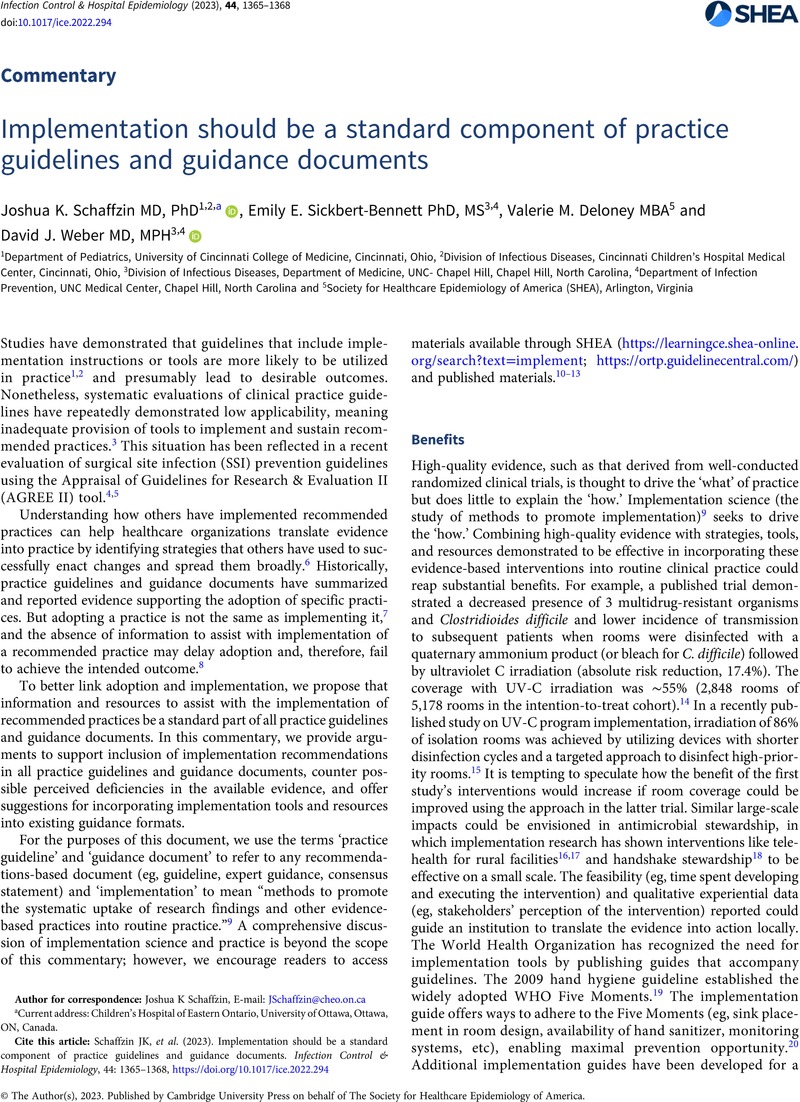Crossref Citations
This article has been cited by the following publications. This list is generated based on data provided by Crossref.
Saito, Hiroki
Okamoto, Koh
Fankhauser, Carolina
Tartari, Ermira
and
Pittet, Didier
2023.
Train-the-Trainers in hand hygiene facilitate the implementation of the WHO hand hygiene multimodal improvement strategy in Japan: evidence for the role of local trainers, adaptation, and sustainability.
Antimicrobial Resistance & Infection Control,
Vol. 12,
Issue. 1,
Soma, Mounica
Scebold, Jody
Vasa, Angela
Fitzgerald, Teresa Ann
Tyner, Kate
Lalam, Satya Kumar
Beach, Sue
and
Ashraf, Muhammad Salman
2024.
Resources needed by critical access hospitals to address identified infection prevention and control program gaps.
Antimicrobial Stewardship & Healthcare Epidemiology,
Vol. 4,
Issue. 1,




